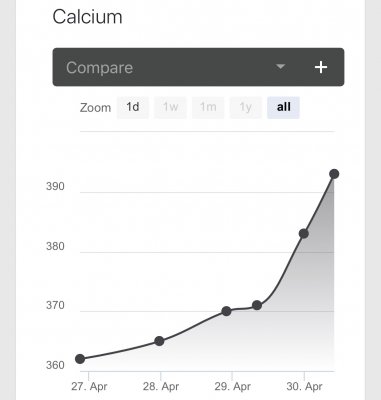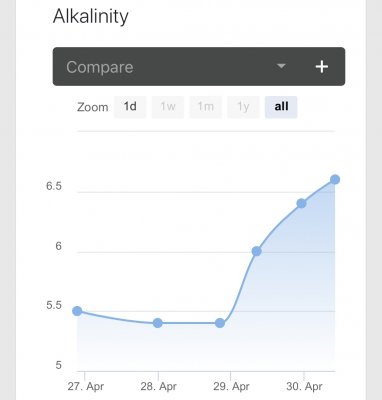- Joined
- Apr 9, 2020
- Messages
- 31
- Reaction score
- 16
I have an AquaMaxx cTech T-NANO hang-on calcium reactor. I just set it up on my 11-gallon aquarium because I recently got my first stony coral frags and want to start maintaining proper chemistry for these corals.
I’m using a Versa peristaltic dosing pump from EcoTech Marine to dose the effluent. The pH controller I’m using is the MC122 from Milwaukee, and the probe itself is the double-junction one made by Neptune. I have the MA957 CO2 regulator from Milwaukee.
I’m running into an issue where the pH in the reactor fluctuates rapidly between 6.5 and 6.7 while the Versa is on. I assume the higher pH tank water being drawn into the reactor is causing this problem. When I turn the Versa off the reactor’s pH is rock steady. I can run the Versa at a rate of 1ml/min without issue, but any drip rate higher than that causes the whole system to go haywire. The fluctuating pH causes the controller to cycle the solenoid on my CO2 regulator on and off over 20 times per minute. At that rate I’ll need a new regulator by next month! ;Nailbiting
I can run the reactor at a low drip rate for now, but eventually I worry I won’t be able to keep up with a tank full of stony corals. I’d like to figure out how to resolve the issue now rather than later.
thanks in advance for any advice!
I’m using a Versa peristaltic dosing pump from EcoTech Marine to dose the effluent. The pH controller I’m using is the MC122 from Milwaukee, and the probe itself is the double-junction one made by Neptune. I have the MA957 CO2 regulator from Milwaukee.
I’m running into an issue where the pH in the reactor fluctuates rapidly between 6.5 and 6.7 while the Versa is on. I assume the higher pH tank water being drawn into the reactor is causing this problem. When I turn the Versa off the reactor’s pH is rock steady. I can run the Versa at a rate of 1ml/min without issue, but any drip rate higher than that causes the whole system to go haywire. The fluctuating pH causes the controller to cycle the solenoid on my CO2 regulator on and off over 20 times per minute. At that rate I’ll need a new regulator by next month! ;Nailbiting
I can run the reactor at a low drip rate for now, but eventually I worry I won’t be able to keep up with a tank full of stony corals. I’d like to figure out how to resolve the issue now rather than later.
thanks in advance for any advice!





















